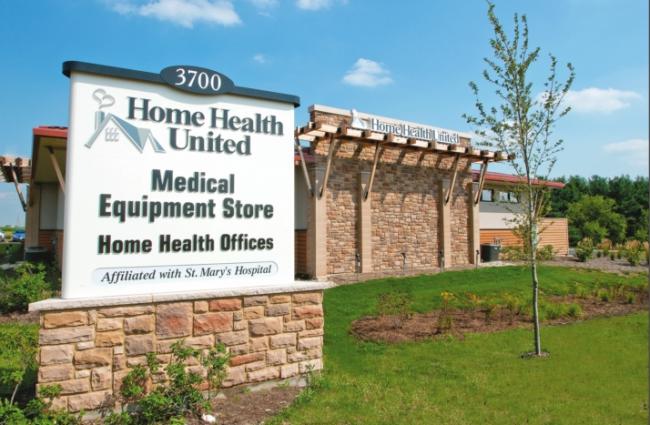
Stormwater systems help control runoff, replenish aquifers and conserve energy
JANESVILLE
Roof and rain gardens. Impervious pavement. Underground bioretention devices.
All are stormwater management systems becoming more common in the Janesville area.
The new CVS building on Milton Avenue, for example, has an underground bio-retention system. Passersby, though, see a mulched garden with native plantings.
The Mercy Health System parking garage and the new Home Health United building use underground storage systems.
Beloit Memorial Hospital built a roof garden. Lycon installed porous concrete on Youth Sports Complex parking lots in Janesville. A glittering parking lot made of recycled glass sucks up rainwater at Janesville’s Wastewater Utility.
Motorists using the new interchange at Racine Street in Janesville are likely unaware they are driving past a state Department of Transportation pilot project to manage runoff during construction. New state regulations concerning stormwater management are tougher in river basin areas.
As areas become developed, stormwater runs off impervious surfaces such as roads and roofs. The water carries pollutants into the nation’s waterways. The water cannot infiltrate into the ground and replenish aquifers below.
Wisconsin is unusual because it has rules for infiltration and total suspended solid reduction that other states don’t, said Gale Price, senior planner for Janesville.
 That’s a good thing, Price said, noting that groundwater flows south.
That’s a good thing, Price said, noting that groundwater flows south.
“We want Madison to reintroduce that stormwater back into the ground so we have water here,” he said.
“They’re all efforts to bring the Rock River and other creeks and streams up to meet water quality standards.”
Water that infiltrates the ground is purified as it moves through the ground and recharges the aquifer.
Detention ponds—designed to slow the release of stormwater—have been commonly used here in the past.
But bioretention devices are becoming more common as DNR requirements become more stringent and in areas where land is more expensive.
Any development that disturbs an acre or more of land must include stormwater management.
Redevelopment projects in the state beginning in 2011 were no longer exempt from managing their stormwater even if the sites reduced the impervious areas by adding green space.
Katie Udell, a landscape architect at Angus Young Associates, specializes in stormwater management.
“I think there’s definitely been a bigger acceptance of bioretention devices,” Udell said.
They are more complex than a rain garden and more desirable than a large, wet detention pond that takes up a lot of land.
Above ground, the devices are depressions that are mulched and planted with native plants. Below ground, there is a special soil mix that filters and absorbs rain water from lots and roofs. Drain tiles are used in areas with clay soil.
The runoff from smaller rainfalls is the most important to capture, Udell said.
That’s because most of the contaminants run off during the initial flush of water.
Udell was also involved in the design of a 5,350-squarefoot roof garden at Beloit Memorial Hospital. The roof was already sloped, and garden areas were created using a system of trays. Rainwater is taken up by the plants, slowing and reducing runoff.
In summer, depending on the plants and depth of the growing medium, green roofs retain 70 to 90 percent of rainfall; in winter, between 25 percent and 40 percent, according to information provide by Udell. Green roofs also act as natural filters for water not captured and reduce heating and cooling costs inside the buildings.
Jennifer Grimes, DOT regional environmental coordinator for the Interstate 90/39 mega team, is charged with a pilot project to reduce runoff during the years-long construction project.
The construction area is in the Rock River watershed and so falls under stricter standards for runoff and its suspended solids and phosphorus.
The DOT has created five infiltration fields between the Interstate and the on- and off-ramps. Wider-than-usual grass swales will be planted and other areas seeded with native meadow plants that can tolerate long periods of wet. Other retention areas are planned, as well.
“This wouldn’t be the first time we’ve done planting with (native) seeding,” Grimes said.
What is different is that this is the first project that is meeting the new river basin requirements, she said.
“Over the next several years, we are working jointly with the DNR to account for what each (road) project has added,” she said.
State departments also continue to study permeable pavement, its stormwater retention abilities and how well it holds up to harsh climates. Permeable pavement includes concrete, asphalt and pavers.
Chicago, for example, has replaced miles of its alleys with permeable pavement to improve stormwater retention.
Advances that may soon see greater use here include vertical gardening and water reuse. A new fire station in Madison stores rainwater that firefighters use to wash their vehicles.
Water reuse is common in other parts of the country.